The Jakarta Airport Railink is a 54.3 kilometre long rail service running between Jakarta’s Soekarno-Hatta International Airport and Manggarai station in the central area. It is the only rail link between the Airport and the rest of the city, serving a total of 5 mainline railway stations – the Airport, Batuceper, Duri, BNI City, and Manggarai. Services to BNI City started in December 2017, before being extended to Manggarai in September 2019.
The Railink covers the distance between the airport and Manggarai in a scheduled 52 minutes, and is a viable option for travel to and/or from the airport. I had the opportunity to catch the Railink from the Airport to BNI City, and here’s my experience.
Note: The Railink is also known as “KA Bandara” (Kereta Api Bandara), which literally translates to “Airport Train”. You are most likely to see this on station signage throughout the city.
For the trip on the Railink from BNI City to the Airport, click here.
Buying my tickets
I bought my one-way ticket in person at the ticket vending machine for Rp 50,000 (approx. MYR 15.27, SGD 4.31, USD 3.19). These machines come with card readers that accepts PIN enabled cards, and I was able to use my Wise card without issues.
Here are some ways of paying for your ride as a foreign visitor –
- Pre-purchasing on the KA Bandara website or app: You can only buy tickets for specific timings and is not a great idea if your travel is delayed.
- Buying your ticket with a PIN enabled card: Use the card machine at the ticket vending machine.
- Buying your ticket with a Jakarta prepaid cash card: Use the card reader at the ticket vending machine. This only works if you already have a cash card with sufficient balance.
- Buying your ticket with QRIS: QRIS is Indonesia’s QR code payment system, and is available for all Indonesian bank account holders. If you are Malaysian, scan the QR code as if it were DuitNow.
Note that both the website and ticket vending machines sell tickets for specific train timings only, so take the train schedule into account before starting your journey. For more ticketing information, visit the Railink website.
Jakarta Airport Railink Schedules
Trains generally run between 5:00 am and 11:00 pm with departures every 30 minutes, interspersed with 1-hour intervals at various points of the schedule. Any changes to the schedule is usually notified at the stations via pop up banners.
Click here for the full Railink schedules on the Railink website.
Departure from Jakarta Soekarno-Hatta International Airport
The Airport Railink station is located between Terminals 1 and 2, and is connected to all 3 terminals via a people mover system branded “Skytrain”.
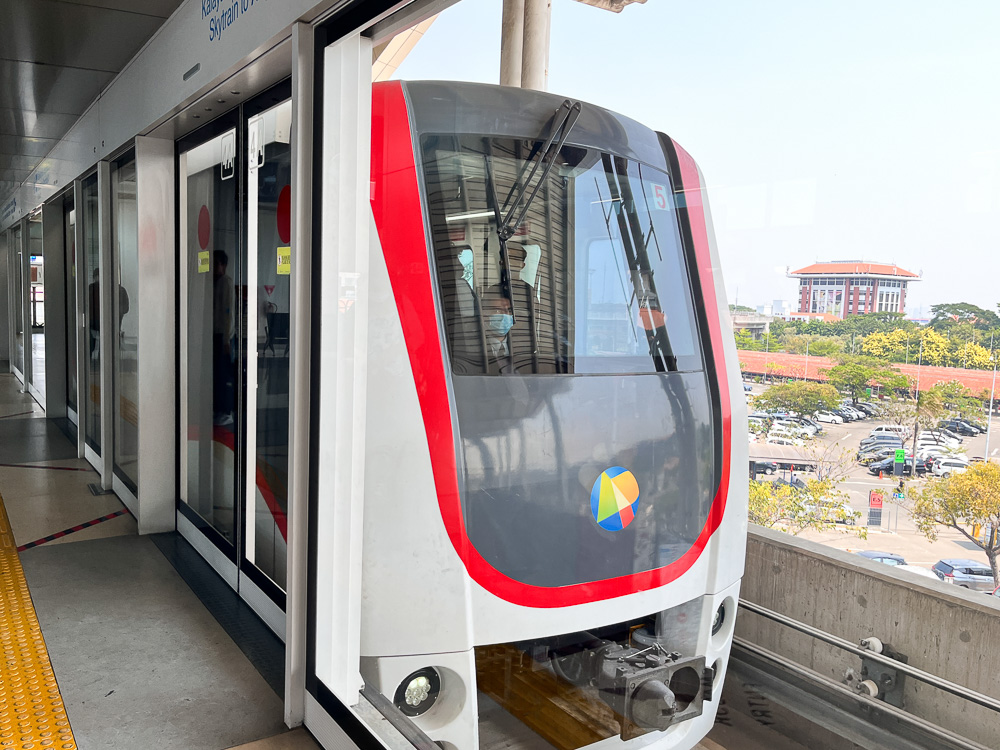
The Airport Railink station is a bright and airy structure with the platforms and ticket barriers in the middle of the western end of the building. While the structure can accomodate the volume of passengers passing through, there are for some reasons a limited numbers of ticket vending machines. This results in a long queue whenever there is some tech hiccup, but adequate staff is usually on hand to provide assistance immediately.
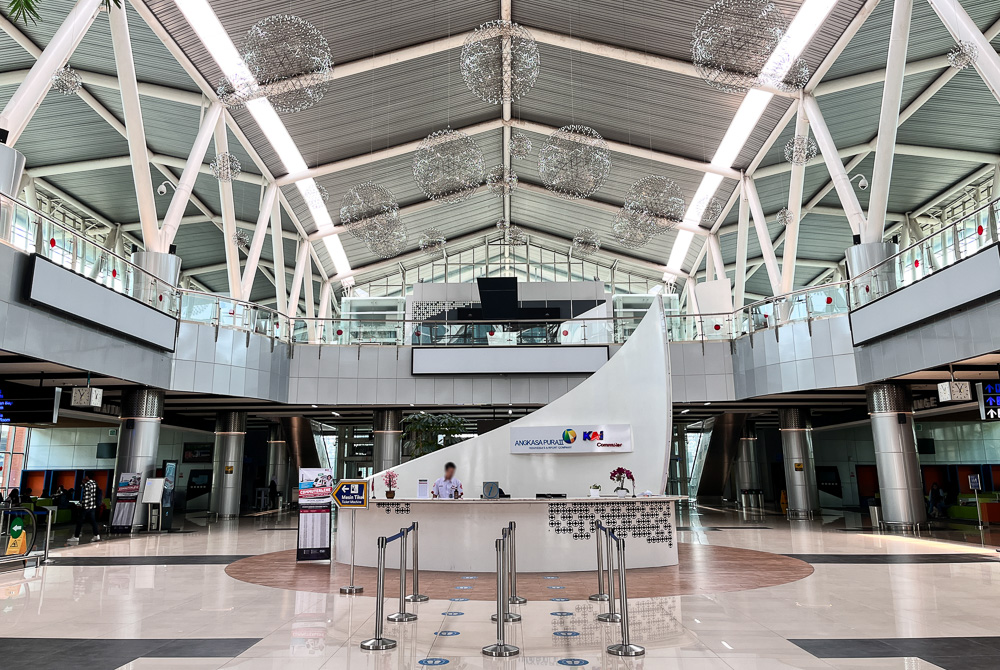
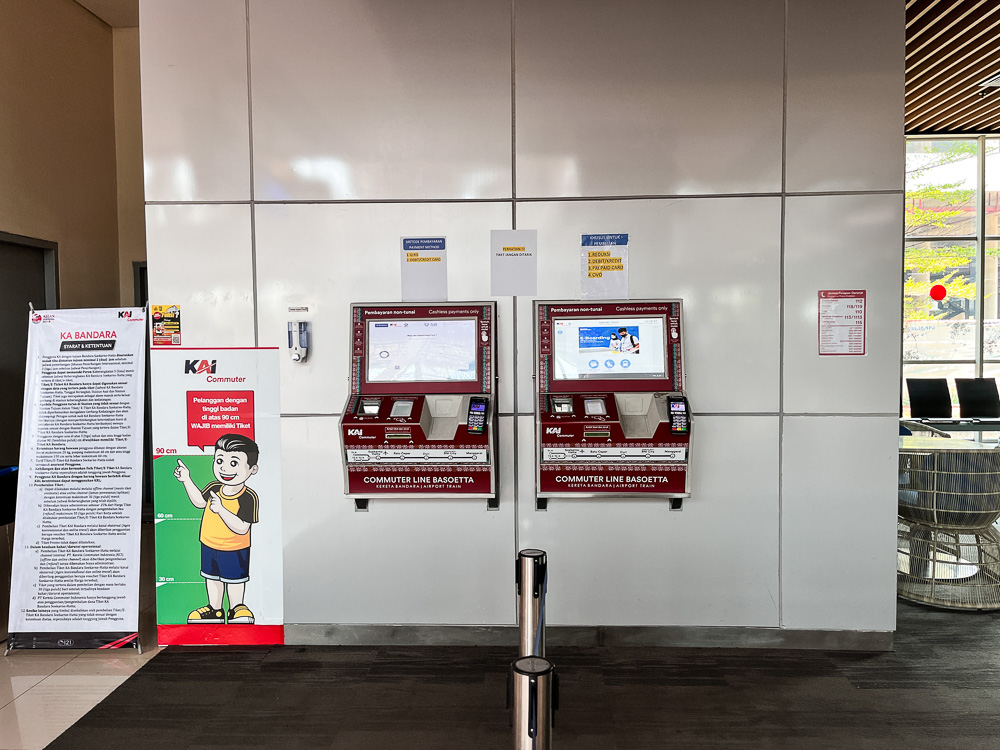
Waiting areas with ample seating are provided on both sides of the ticket concourse with wall plugs available on one end – perfect for charging your phones after a flight.
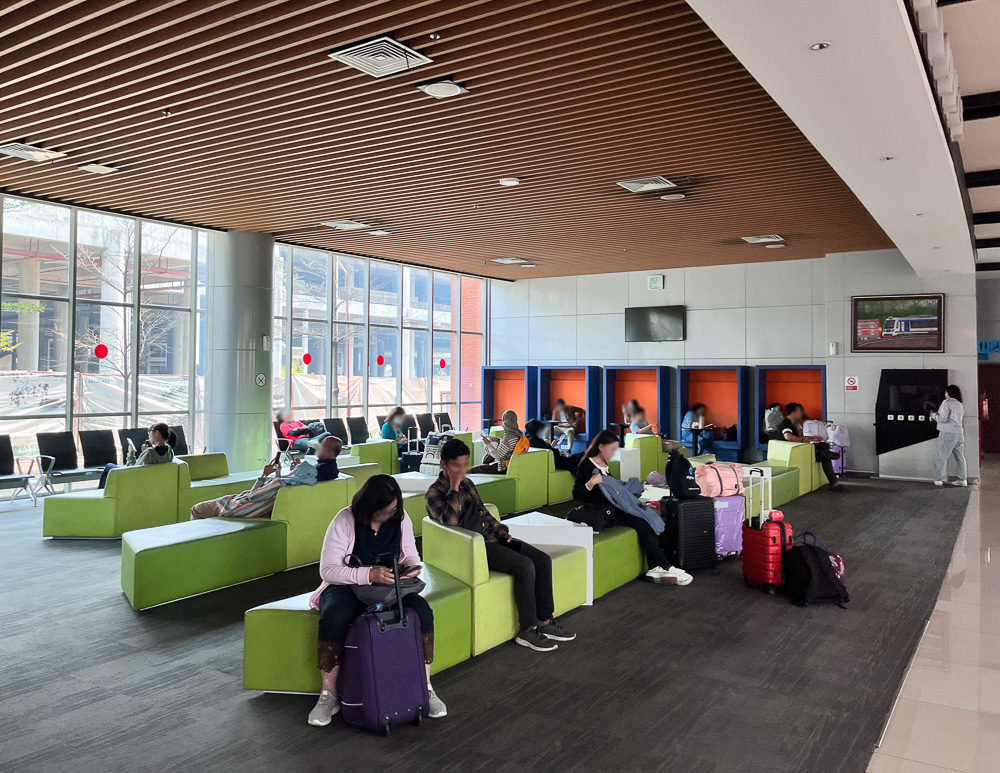
Boarding was called 5 minutes before the scheduled departure time, with the incoming train set having disembarked its passengers. The waiting passengers were then directed through the ticket barriers and down the glass-enclosed platform with platform screen doors.
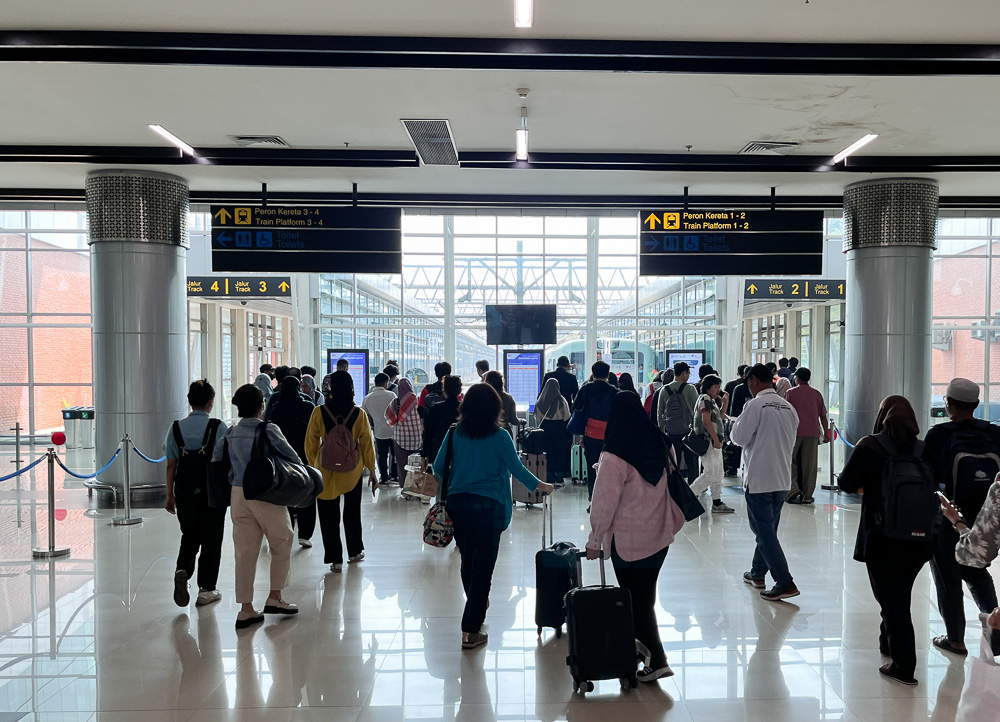
I quite like the initiative to make a more premium platform space, but unfortunately the heavy use of glass leads to a hot and stuffy platform – courtesy of a mini greenhouse effect.
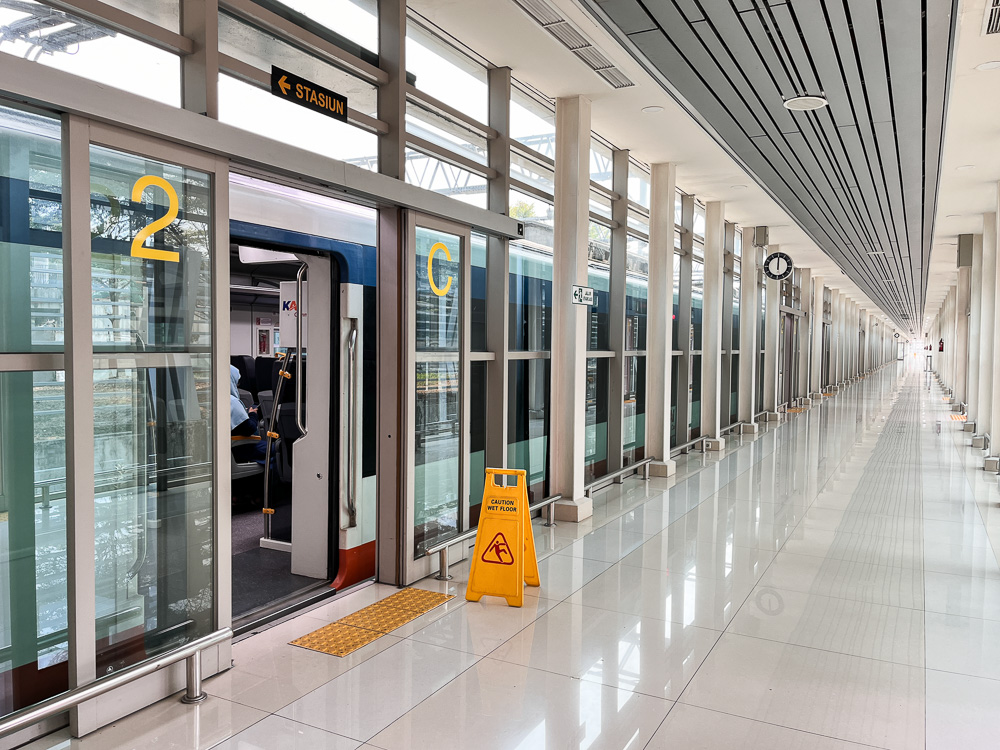
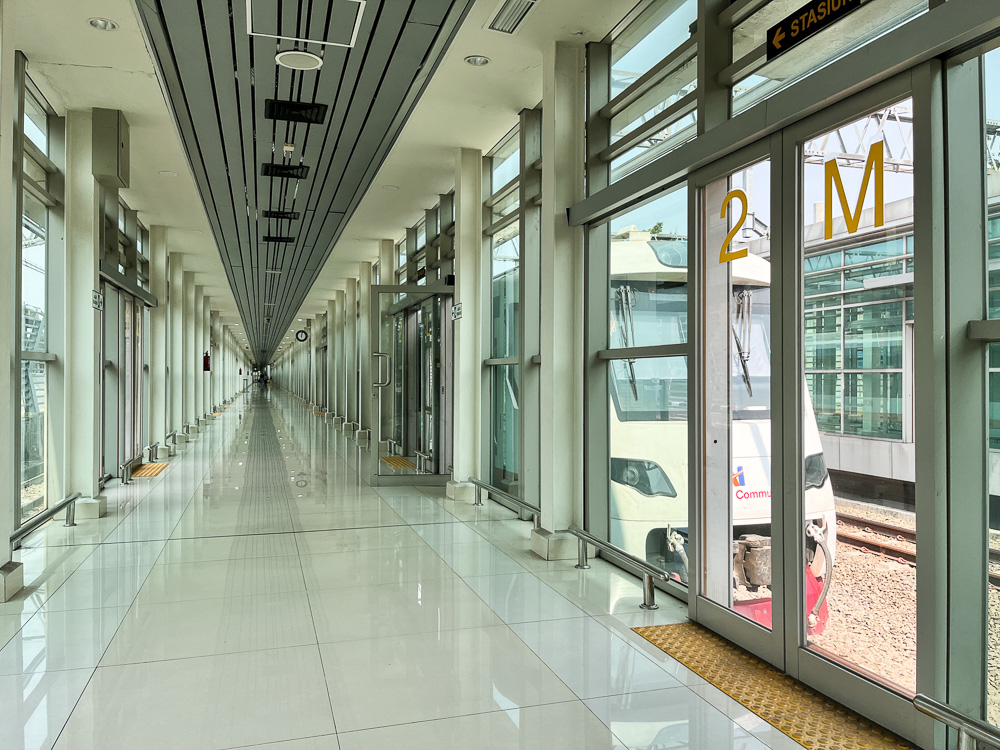
Onboard Cabin & Amenities
The Railink is operated by locally built 6-car PT INKA EA 203 EMU sets with a 1-class configuration onboard. Seats are arranged in an intercity style 2-2 layout, and the orientation of the seats are fixed in each carriage – Seats in each half of the carriage face towards the middle of the carriage. This means that on each trip, half the seats in each carriage are facing backwards.
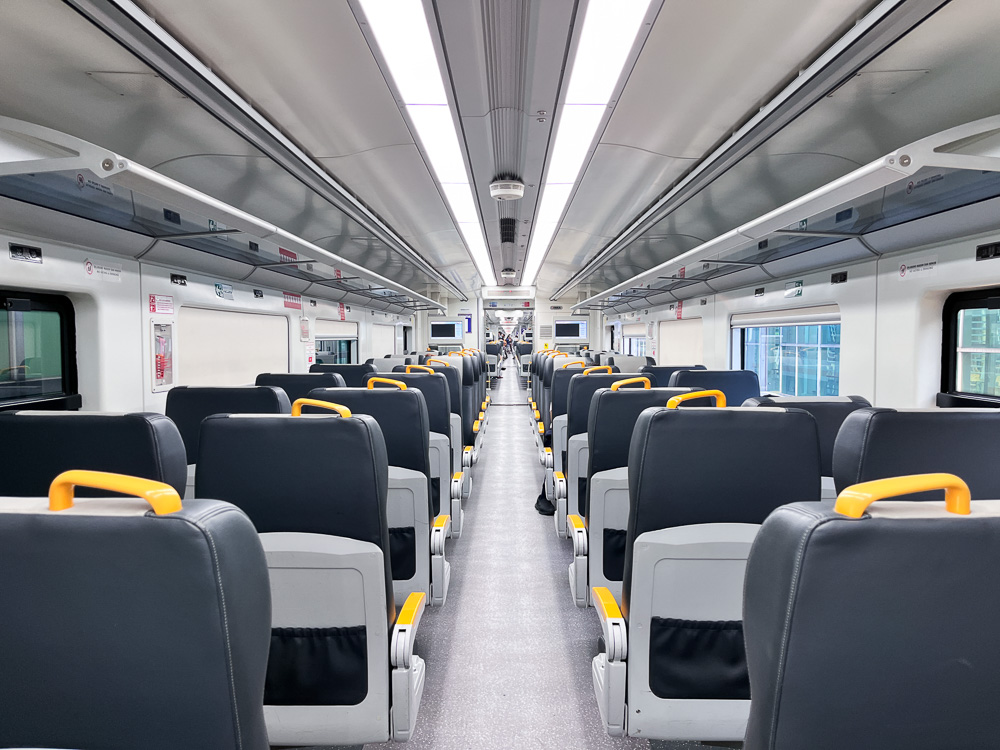
The seats themselves are upholstered in a PVC material that has held up well, although a number of the seat cushions are already showing visible signs of wear. The legroom is fantastic and one can easily fit a small roller bag (of cabin luggage dimensions) in the leg space. My only gripe with the seat is that the seat cushion is placed a bit low, which isn’t the most comfortable if you have long legs.
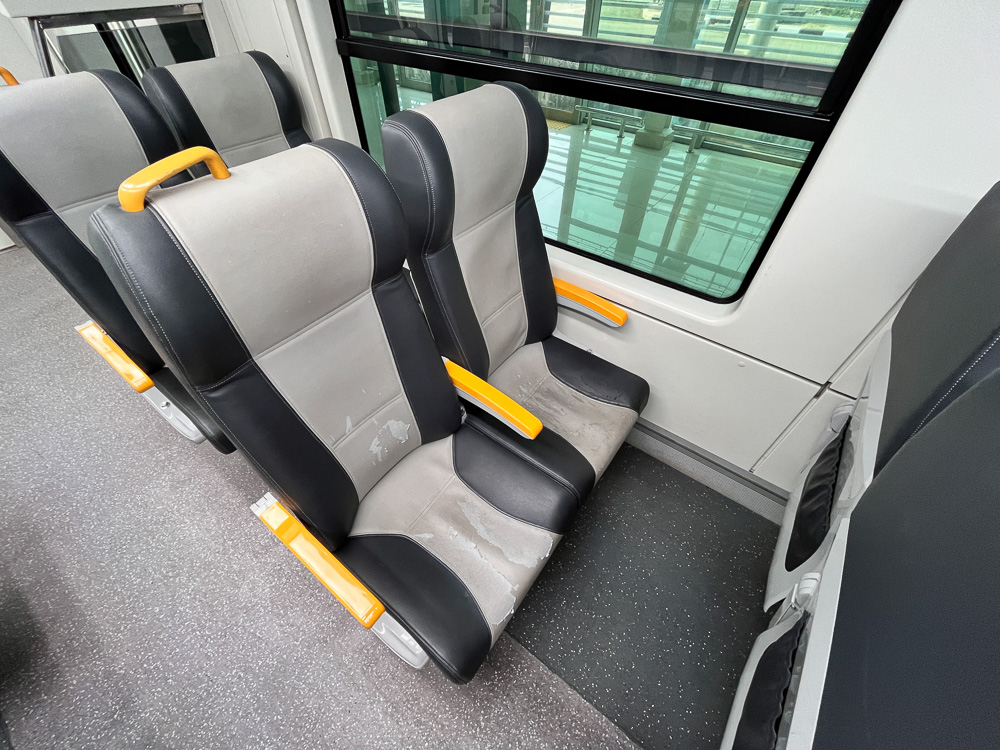
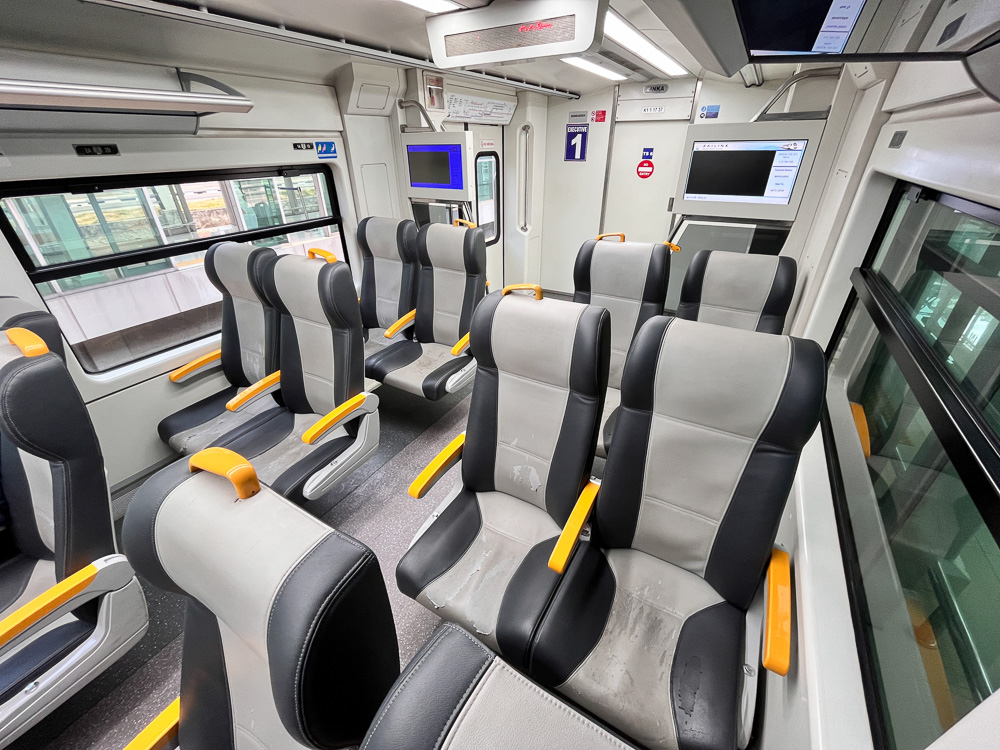
If you’re boarding at the Airport and want a seat to yourself, I recommend walking further down the platform for a seat closer to the front of the train. For some odd reason most passengers are content with filling up the first 2 or 3 carriages, which leaves a lot of empty seats in the rest of the train.
Onboard Amenities
The trains are fitted out specially for the airport service. There are multiple luggage racks onboard, and overhead racks are available for smaller items.
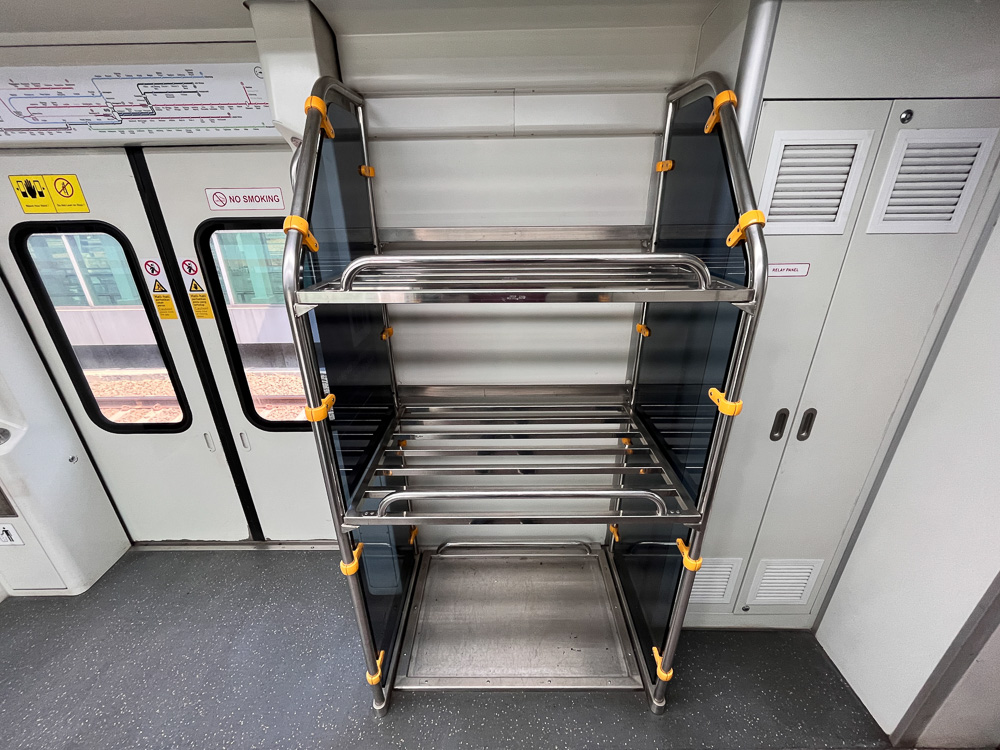
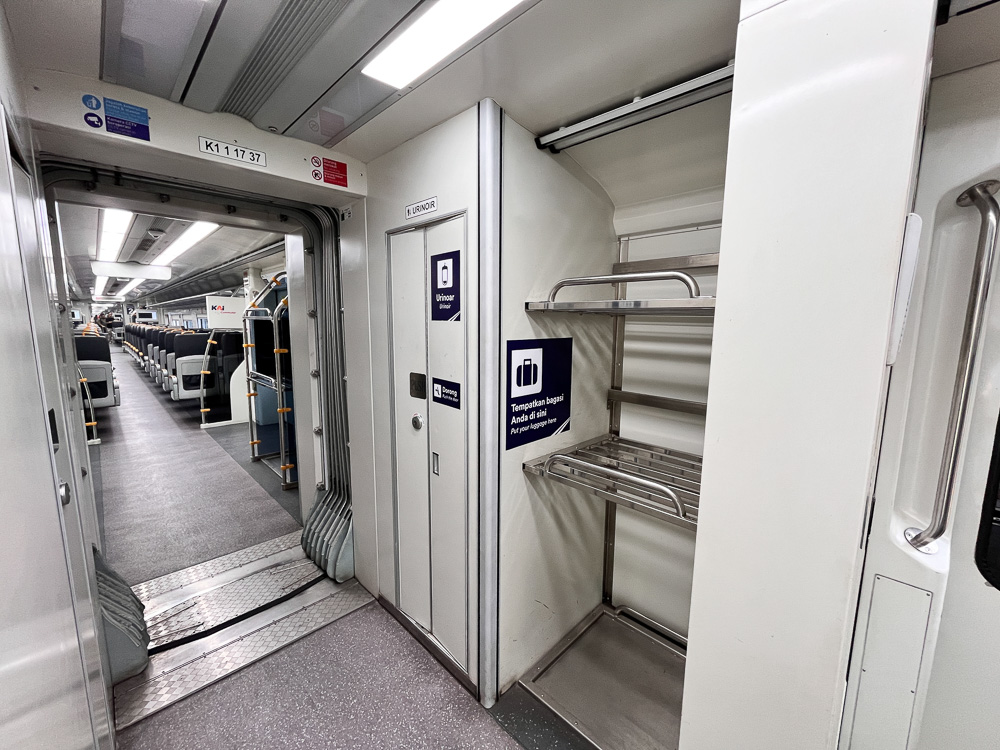
Both western style toilets and urinals are available onboard the Railink trains. These are clearly marked to prevent confusion, and they were kept pretty clean. The western style toilet is marked as accessible and also features a nappy changing table. However, the space is quite small and may be insufficient for users with mobility issues.
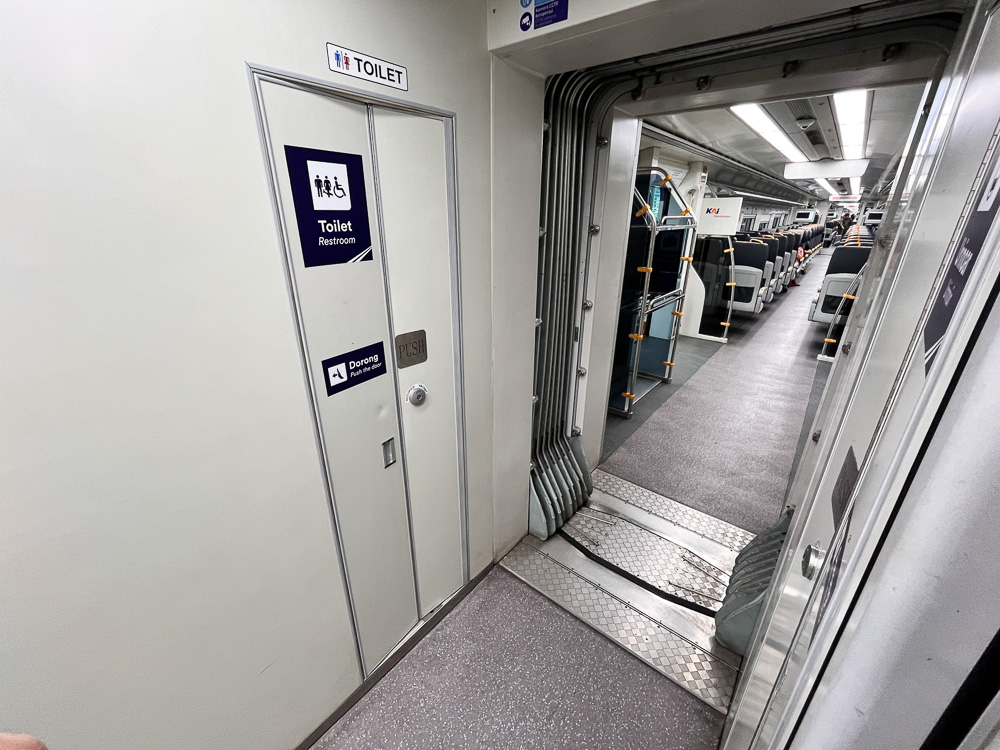
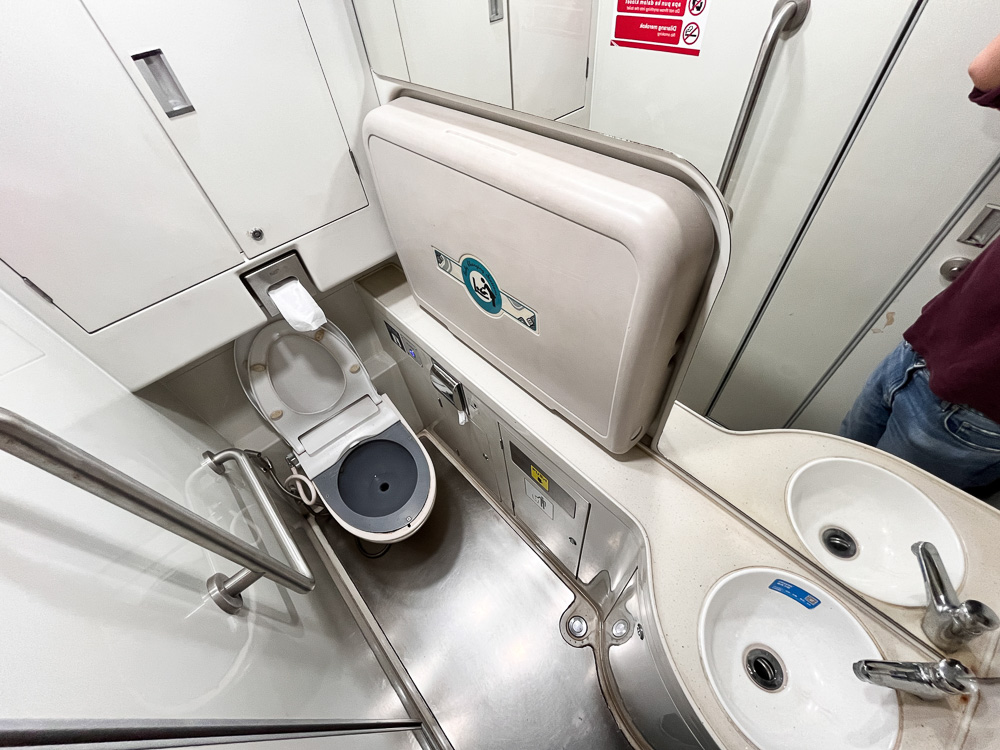
A map of the Jakarta rail network is also pasted above every pair of doors, but these seem to portray the rail network as completely integrated with no out-of-station interchanges required. This is evidently not quite true.
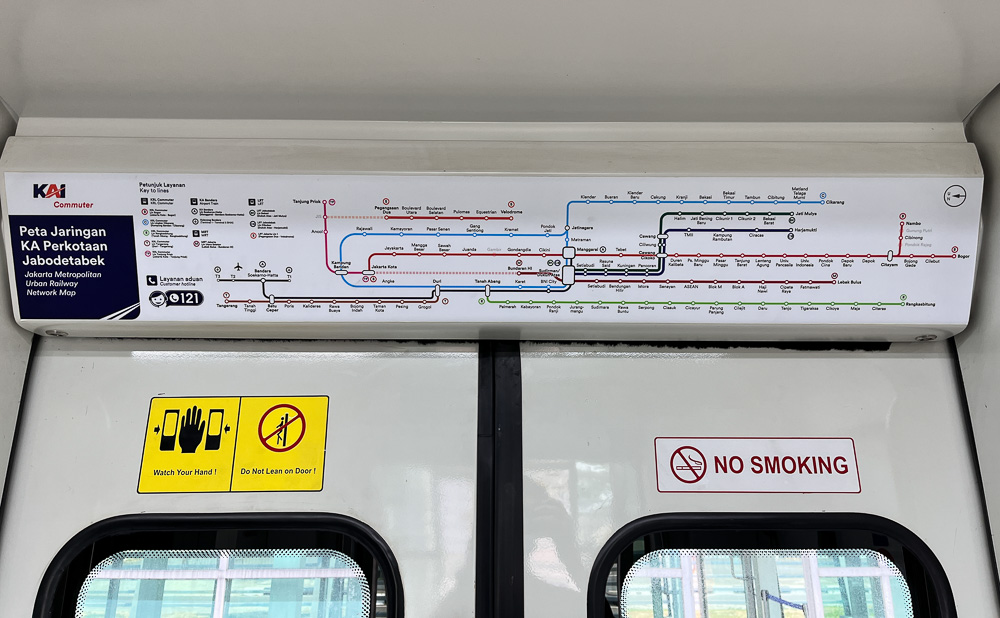
Ride Experience on the Railink
The Railink offers a generally smooth ride between the airport and the city. It shares the same tracks as the KRL Commuter lines, but trains are given priority over KRL trains. That, and plus the fact that a number of KRL stations are equipped with passing loops allow the Railink to keep to its published schedule without being held up behind slow commuter trains.
Contrary to usual practice for an airport rail link, the Railink’s alignment is anything but direct – the service proceeds along a newly constructed alignment that loops around the far western end of the airport and rejoins the KRL tracks right after Batuceper station.
As the KRL runs on existing rail corridors for most of its journey, it offers visitors to Jakarta an introduction to the inequalities in Jakarta’s urbanscape. A ride from the airport gives visitors a view that transitions from everyday densely packed suburbs to BNI City – a new financial district with glassy skyscrapers.
Arrival at BNI City station
We arrived at BNI City after 44 minutes of travel. BNI City caters to both the Railink and KRL Commuter services on the Cikarang Loop Line, with Railink passengers being funnelled through dedicated fare gates to cater for the separate fare tables of both services.
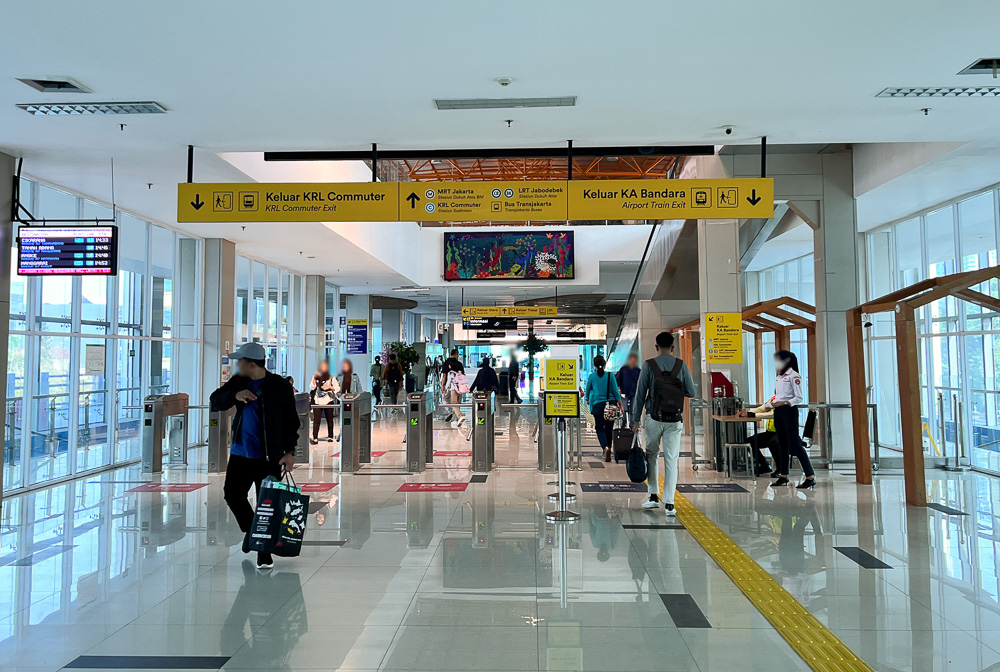
The station is also well connected (by Jakarta standards) to the Dukuh Atas BNI station of the Jakarta MRT via a short walk. BNI City’s KRL services connects it to the wider KRL network, but the Sudirman KRL station next door also offers a connection to Dukuh Atas LRT station across the river. Sudirman KRL is a very short and convenient walk away from both BNI City and Dukuh Atas BNI MRT, but the connection between Sudirman KRL and Dukuh Atas LRT is not convenient at all. I’d recommend connecting to the Railink at BNI City only via the KRL and MRT.


Notwithstanding the waiting time for the Skytrain and Railink, the entire ride took approximately 1 hour.
Final Thoughts
I think the Railink is a pretty good option for travel from the Airport to the city, and its primary advantage is that the trains are not held up by Jakarta’s notorious traffic. But the overall convenience really depends on whether you have luggage, whether you are part of a larger group, and also whether you can get from any of the Railink stations to your destination conveniently – bearing in mind that you will still have to drive from a Railink station if you cannot connect onwards to the KRL, MRT, LRT, or the Transjakarta BRT.
Other alternatives exist for travel to and from the airport. DAMRI, for example, offers bus connections directly to multiple destinations within and outside the Jakarta urban area. If you have a lot of luggage and/or need flexibility, then a Bluebird taxi is also a much better option than the Railink.
Assuming everything works in your favour, however, I would still recommend the Railink as a stress-free option for travel from the airport.
Comments
One response to “PT KAI: Jakarta Airport Railink from Soekarno-Hatta International Airport to BNI City”
[…] For the trip on the Railink from the Airport to BNI City, click here. […]